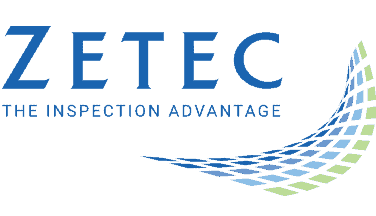How Ultrasonic Inspection of Forgings Ensures Quality Products
Forging is a necessary metalworking process where metal parts are molded or pressed to achieve the desired design requirement. Modern industrial components such as rotors, shafts, turbine blades, and landing gears are mostly forged and provide similar or enhanced mechanical properties as the machined or cast components.
However, due to compression and deformation processes that the metal has to go through, the internal texture of the metal changes gives rise to defects. For this very reason, nondestructive testing (NDT) is necessary. By inspecting the type and extent of flaws and defects, the quality of the forged product can be ensured.
Understanding Forging Defects and Ultrasonic NDT
Forged structures are preferred by industries in applications with high strength requirements. Different forging mechanisms are responsible for developing various types and degrees of forging defects.
Based on temperature ranges, these forging mechanisms can be classified as hot forging (metal is heated to their melting point) and cold forging (little heat is used). These forging processes bring about the change in the microstructure of metal due to thermal variation. Hence, the following types of flaws can be observed:
- Laps
- Cold shuts
- Surface/ subsurface cracking
- Inclusions
- Corrosion
For metals such as steel, aluminum, brass, copper, titanium, etc., which can be shaped with a forging mechanism for use in various applications, NDT methods such as ultrasonic testing (UT) provide an ideal solution for identifying the flaws mentioned above.
Other NDT methods, including visual inspection, magnetic particle testing, radiographic testing, and liquid penetration testing, have been utilized to inspect forged parts. However, they all have their limitations in ensuring complete coverage of all apparent and underlying defects.
UT is sensitive to both surface and subsurface discontinuities and can provide a highly accurate picture of the flaw attributes. However, this is only true for conventional UT when the defect is not aligned parallel to the ultrasonic beam. For more advanced and volumetric inspection, phased array ultrasonic inspection of forgings can prove beneficial.
Phased Array Ultrasonic Testing of Forgings
Phased array ultrasonic testing (PAUT) operates using a series of individually inducible transducers in a single probe. The beams through each transducer can be separately controlled, focused, and swept without moving the probe. This allows for scanning across diverse angles, enabling the detection of underlying, hard-to-detect flaws in any orientation. Furthermore, a single PAUT probe can facilitate:
- Volumetric coverage with the help of multiple transducers
- Inspection of complex geometrical structure made easier with a customizable beam angle
- Sensitivity to minor defects with a controlled focus
- Increased inspection speed due to large area scanning ability
- Reduced inspection cost through time saving efficiencies
The PAUT instrument solutions such as TOPAZ from Zetec provide an integrated 2D matrix array feature without needing any external software, making the inspection process more efficient. Conventional UT probes can find it challenging to identify flaws in different orientations during forging inspection due to their fixed beam positioning feature. 2D matrix array enables enhanced beam steering for detecting out-of-spec defects with a complete 3D volumetric inspection.
Similarly, with products such as the paintbrush corrosion scanner, conformity to different geometric systems and complete coverage can be assured. Not only that, with high-quality imaging and real-time inspection analysis, technicians can easily locate flaws and analyze inspection data.
NDT Ensures Quality of Critical Forged Components
Any defect development can be damaging for components that are specifically forged to improve product strength. With different materials being forged in varying geometries for different applications, it is necessary that an NDT solutioncan fulfill all inspection requirements.
Zetec’s TOPAZ and paintbrush scanners are effective for ultrasonic inspection of forgings. Through smooth scanning and enhanced data analysis, technicians can easily find hidden flaws, which ensures product quality.
Zetec, a leading provider of NDT instrumentation, can help with maintaining product quality for forge components. Contact us today to discuss the NDT solutions for your application and receive a custom plan for ultrasonic inspection of forgings.






